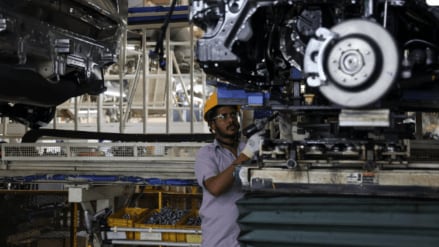By Anish Shah, President, FICCI
The mandate bestowed by the Indian electorate to re-elect the ruling party places India on a strong footing. Business sentiments are high and there is an expectation of continuity of the reform agenda.
As India races towards becoming the third-largest economy in a few years, we must further strengthen the economic landscape. India’s global leadership can be achieved through a strong manufacturing and services sector, supported by sustainability and security in food, water, and energy.
Domestic manufacturing must take a giant leap for India to be a manufacturing hub and a product nation, with a targeted global share in manufacturing of 12% from the current 3.1%. For this, we would have to position India as a nation that promises quality, and achieve scale and localise innovation. A 360° planning of the entire value chain from design to manufacturing must be done, especially in hi-tech areas such as defence, electronics, and semi-conductors.
Over the next few years, India must enhance its overall research and development (R&D) spend to more than 1% of GDP (from 0.7% currently). A collaborative approach for creating innovation clusters is required, co-locating the private sector, academia, investors, start-ups, and government-funded R&D institutions for critical areas such as renewable energy, water, smart mobility, new materials, and life sciences.
As we focus on building our competitiveness in the manufacturing sector, efforts towards reducing the cost of doing business and enhancing ease of doing business must continue. The government must focus on factor market reforms. Expediting implementation of labour codes, making land available at affordable costs, lowering power costs for industry by ending cross-subsidy, reducing logistics costs by expediting the completion of dedicated rail freight corridors, and bringing down rail freights will be transformational in making Indian industry competitive. We also look forward to the inclusion of fuel products under the goods and services tax, a long-standing demand of industry.
While big-ticket reforms are important, addressing ground-level issues that ensure inclusive and balanced development must continue. A critical pillar of inclusive development is the female labour force participation. India could boost its annual growth by 1.5 percentage points if around 50% of women could join the workforce. With right skilling and supportive policies and schemes, we can place many more women in manufacturing roles. We must also make it socially attractive for women and their families to find it easy to come to factories for work. Allowing women to work in night shifts with all safety measures in place (as done in a few states like Uttar Pradesh and Karnataka), setting up working women hostels and crèches in industrial clusters, as well as creating a robust ecosystem around the care economy are some key measures that will promote greater participation of women in the workforce.
Economic growth must be inclusive, especially ensuring the well-being and prosperity of our farmers who are integral to our nation’s success. Structural reforms in agriculture should be a priority, ensuring increase in farm productivity, enhanced incomes of farmers, reduction in food wastage, and sustainability of agriculture. The government may consider pilot reforms with the introduction of modern farm laws in select states to begin with. The focus should be on creating an efficient farm-to-fork ecosystem across the country. A collaborative Centre-state approach towards establishing potential agri-clusters may be considered. Developing farm gate infrastructure including scientific storage, grading, processing, lab testing, packaging, point of sale/purchase, and transport facilities will be critical to modernise agriculture and reduce post-harvest losses (from current 40% to 20%). The government should also promote solar energy-driven cold storage for perishable commodities, portable cold storage and tech-enabled agri-logistics for real-time tracking of goods in transit to improve supply chain efficiency.
A mission mode approach for enhancing farm productivity is required. The government can look at launching an agricultural yields mission for the bottom 100 districts on the lines of an aspirational districts programme. Our agriculture practices must be sustainable. India must work on developing climate-resilient seeds through R&D collaboration between the private sector and agri-research institutions. A greater thrust is required on farm mechanisation and the optimal usage of agri-inputs. FICCI has suggested introducing “One Nation, One Licence” to simplify and standardise licensing requirements across states for seeds and agri-inputs to reduce time to market from 5-8 years to 3-5 years.
The government should aim at skilling three million village locals as farm technicians to provide new technologies and services to farmers. These technicians could specialise in areas such as soil testing, micro irrigation, drones, sensors, farm machinery, post-harvest technologies, as well as operation and maintenance of the in-village water supply system. The Agri Stack will play a crucial role in India’s agriculture progress. The government must lay out a roadmap for a full-fledged agri-digital stack with multiple use case applications such as predictive analysis for yield optimisation, crop management, pest management, precision spraying, and market forecasting.
Lastly, sustainability must continue as the focus area. Be it the green transition in energy and other sectors; circular economy; or sustainable cities with clean air, water, and transport; the government must create a road map and a practical framework, enabling policies for implementation.
The author is the President of FICCI.
Disclaimer: Views expressed are personal and do not reflect the official position or policy of Financial Express Online. Reproducing this content without permission is prohibited.
